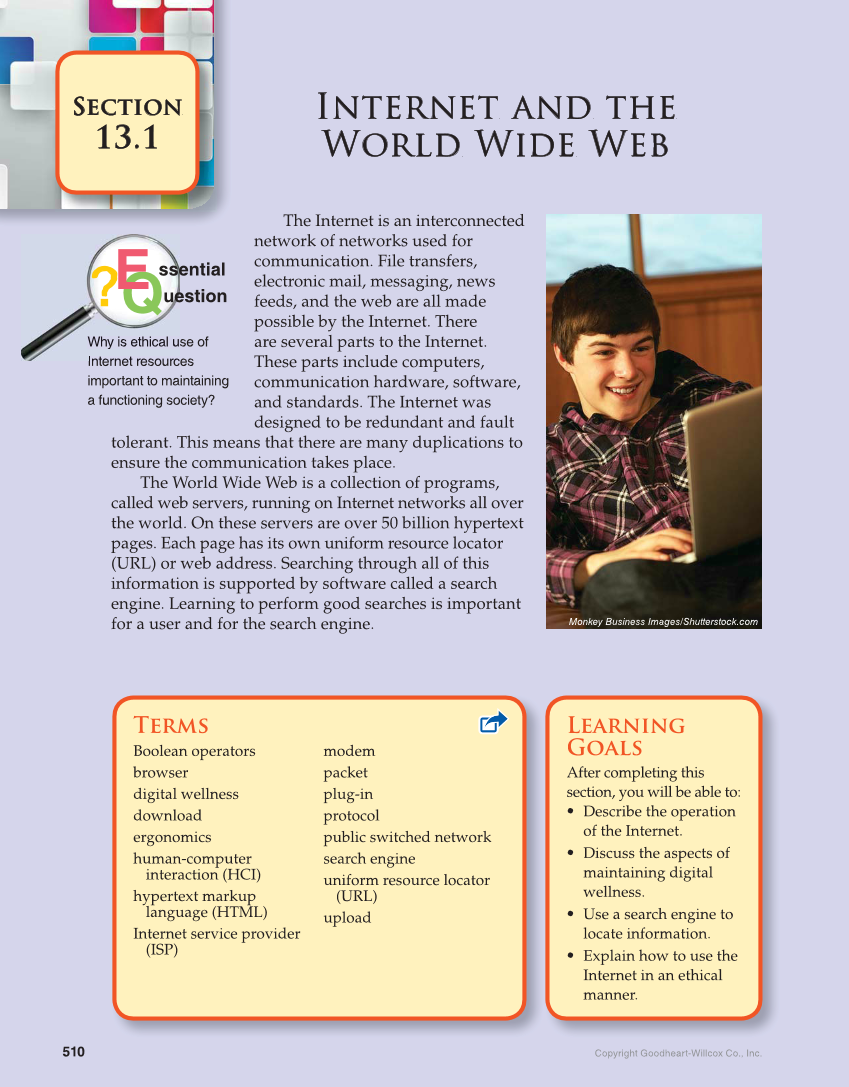510 Copyright Goodheart-Willcox Co., Inc. Section S 13.1 Terms Boolean operators browser digital wellness download ergonomics human-computer interaction (HCI) hypertext markup language (HTML) Internet service provider (ISP) modem packet plug-in protocol public switched network search engine uniform resource locator (URL) upload Learning Goals After completing this section, you will be able to: • Describe the operation of the Internet. • Discuss the aspects of maintaining digital wellness. • Use a search engine to locate information. • Explain how to use the Internet in an ethical manner. Internet and the World Wide Web The Internet is an interconnected network of networks used for communication. File transfers, electronic mail, messaging, news feeds, and the web are all made possible by the Internet. There are several parts to the Internet. These parts include computers, communication hardware, software, and standards. The Internet was designed to be redundant and fault tolerant. This means that there are many duplications to ensure the communication takes place. The World Wide Web is a collection of programs, called web servers, running on Internet networks all over the world. On these servers are over 50 billion hypertext pages. Each page has its own uniform resource locator (URL) or web address. Searching through all of this information is supported by software called a search engine. Learning to perform good searches is important for a user and for the search engine. Monkey Business Images/Shutterstock.com Why is ethical use of Internet resources important to maintaining a functioning society? Wh y is ethical us Internet resource
